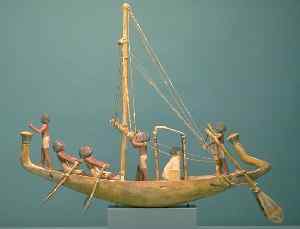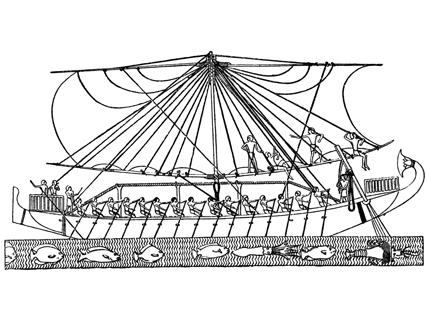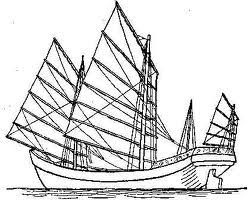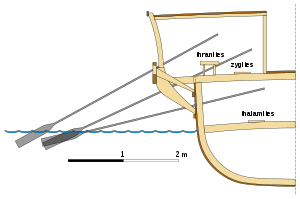Daily Update 2.5
Week 3: Module 2: Date 2/19/13
Last week we learned about a number of different explorers and where they may have traveled. This week we are going to look at how they got there. We will start with the different types of ships they used and then examine the different tools and strategies they used for navigation.
It is safe to assume that humans or our ancestors were venturing into water as soon as they discovered things that floated. Some of the earliest known boats have been dated somewhere in the range of 7000-10000 years ago. These boats were mainly dugout logs, although a reed boat was found in modern day Kuwait that dates to around 7000 years ago.

As human civilizations developed so did their boats. The ancient Egyptians and Mesopotamians quickly developed ships that could take them across the Mediterranean and through the Indian Ocean to the Indus Valley. The Egyptians were using many different boats, from small boats for traveling on the Nile to ships with upwards of forty oars with a main mast and sail.


The Greeks were developing their prowess in the ocean around 1500 BCE. They took the designs common to the Mediterranean from the Egyptians and the Phoenicians, and improved on them. The major advancement of the Greeks was the use of the Trireme. There is some debate as to which culture, Greek, Phoenician, Corinthian, actually developed this ship but the Greeks used it to establish a dominant empire for hundreds of years. The Trireme added more oarsmen in an overlying fashion in order to increase speed without making the ship longer and reducing strength.

Sources and For more information on Triremes check out these links http://library.thinkquest.org/06aug/00336/greek_ships.htm https://en.wikipedia.org/wiki/Trireme
The Chinese invented a ship called a junk. The early Chinese junks were being developed sometime in the 2nd century CE. They are described as carrying as many as 700 men with four or five masts and sails. The Chinese were ahead of the west in other ways as well such as the stern-mounted rudder, water tight sections and the magnetic compass. These junks developed over the centuries but were usually far larger than any in the west. Zheng He, the Chinese admiral from update 2.4, had a treasure ship that was said to be around 400 feet (121.9 meters) long and have 9 masts. Although as with most things in history there is a debate to the actual size, but all agree that it was very large.


What do you notice about the sails that are different than the traditional sail? Why do you think it is like that?
Check back tomorrow as we continue the exploration of boats in history.
Sources and more information on Chinese junks and maritime history: http://www.iro.umontreal.ca/~vaucher/Genealogy/Documents/Asia/asiaShips.html http://www.historyworld.net/wrldhis/PlainTextHistories.asp?groupid=104&HistoryID=aa14>rack=pthc https://en.wikipedia.org/wiki/Junk_(ship)#cite_ref-10

